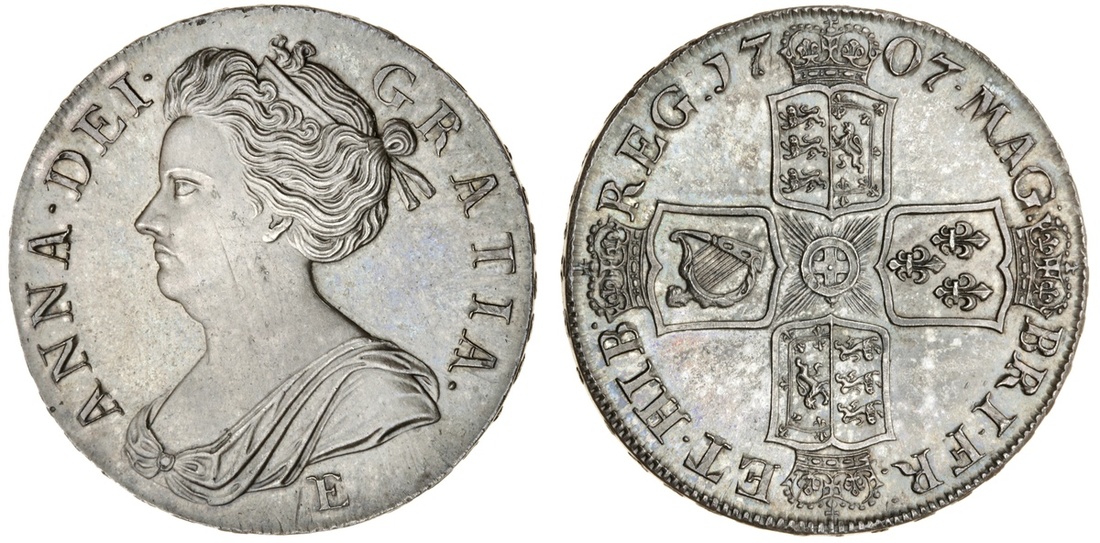
Auction: 19021 - The Dr. Erik Miller Collection Part I - Crowns
Lot: 32
Anne (1702-1714), Crown, 1707-E
Dear, collection dispersed by Spink (acquired 10 July 1964) - "the finest known" - £150.0.0
John Crichton-Stuart, 5th Marquess of Bute, 11 June 1951, lot 275 (part) - "in mint condition and very rare thus" - £12.10.0 (Dear)
~ thence by descent ~
John Stuart, 3rd Earl of Bute (1713-1792)
6th Prime Minister of Great Britain, and tutor to the future King George III.
Following the death of the 2nd Marquess of Bute in 1848, Jonathan Rashleigh, a learned academic and scion of the famous Cornish numismatic family was allowed an exclusive private viewing of the Bute collection, the cabinets of which still remain at the family seat of Mount Stuart. Rashleigh proceeded to document his visit in the Numismatic Chronicle Vol. XIII, April 1850 - January 1851, pp. 1-7, penning a: "A brief notice of the Bute collection of Medals and Coins". In his article, he noted that the collection had originally been the project of the 3rd Earl of Bute, John Stuart (1713-1792) and numbered some 4,700 pieces, but that "the necessarily hurried manner in which the cabinets were looked through, only a very few could be particularly noticed and described.".
Nevertheless he continued: "among the English coins (which are but few in number, and with the series much broken) there is very little to be especially noticed. More than half the whole number are of the commonest kinds of milled money, from Charles II to George III....but the finest specimens in the English collection are - a small naval medal, in silver, of the Commonwealth, by Simon; a silver pattern for a farthing of Charles II., with three pillars; a crown and half-crown of Queen Ann, with
Rashleigh's description, undoubtedly referring to the present coin, not only confirms its whereabouts a further century prior to dispersal, but also highlights the overall importance of this "1707 Edinburgh coinage set" to the collection as a whole, and thereby the significance of this particular coin as its largest constituent part. In the context of the 3rd Earl, this symbolic series, the first to be struck after the Act of Union between the historic kingdoms of England and Scotland in May 1707, takes on even greater importance when one considers that John Stuart, as private tutor and confidant of King George III would become First Lord of the Treasury (Prime Minister) of Great Britain, and as such the first Scotsman to hold the office. One could therefore speculate that given his penchant for numismatics, such a set was commissioned by or more probably gifted to him in recognition of this achievement, although unfortunately no records survive at Mount Stuart to further this hypothesis. It is also interesting to note that John Stuart's own grandfather the 1st Earl, Sir James Stuart (1666-1710) had actively campaigned against Union in 1707 and proceeded to leave Parliament following its ratification. Consequently the potential for the 'set' have been acquired fresh from the mint by the Stuart family can also be quite confidently discounted.
Subject to 20% VAT on Buyer’s Premium. For more information please view Terms and Conditions for Buyers.
Sold for
£16,000




